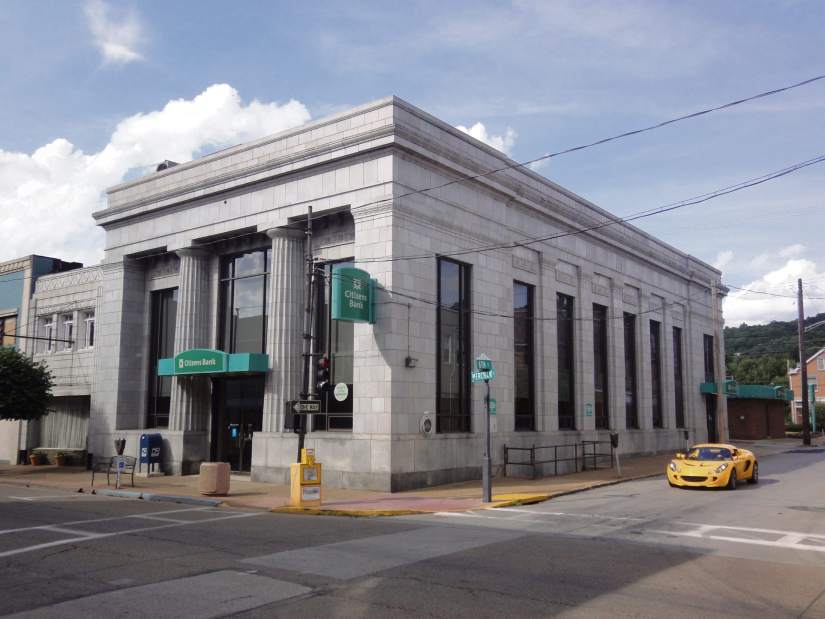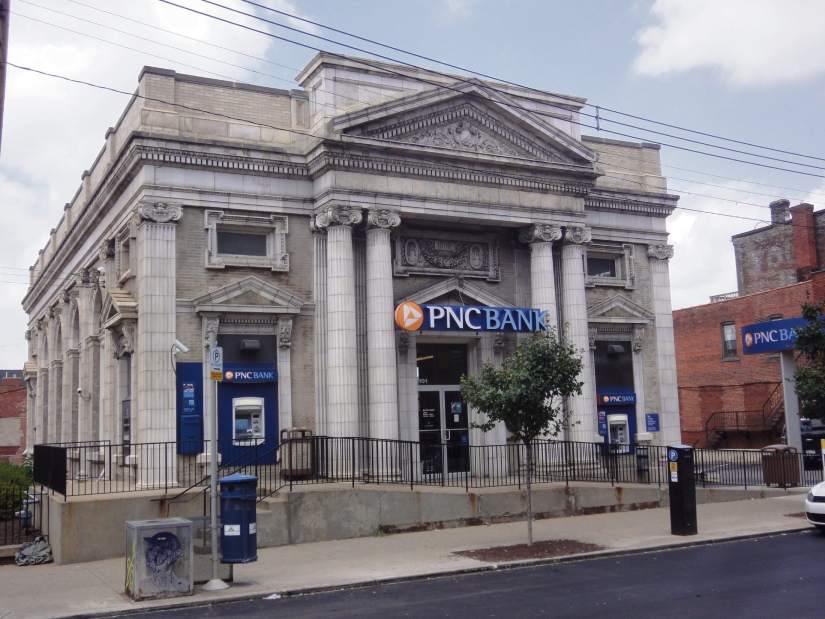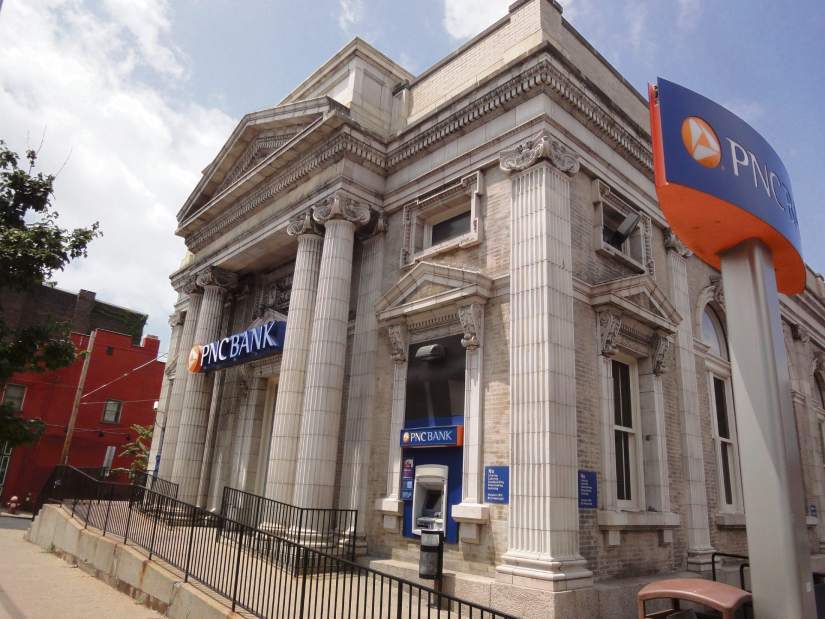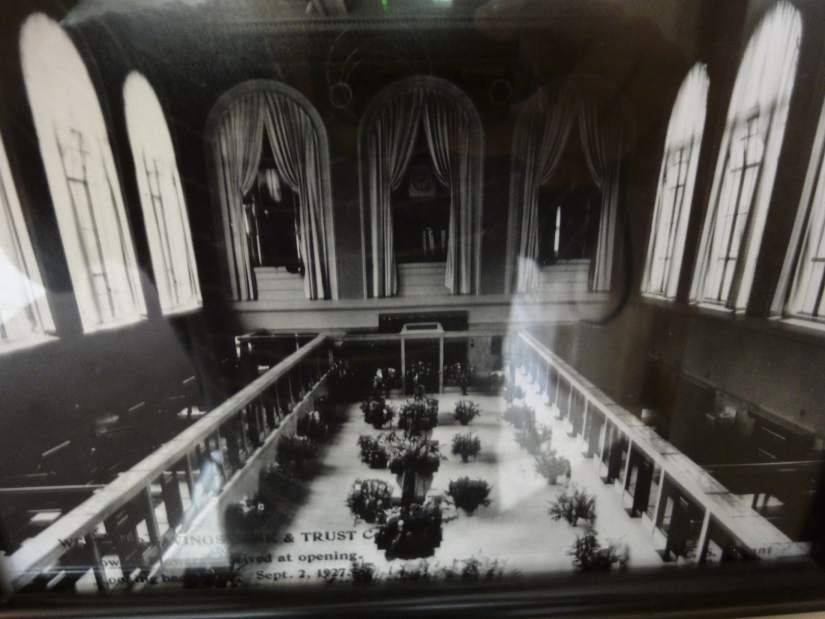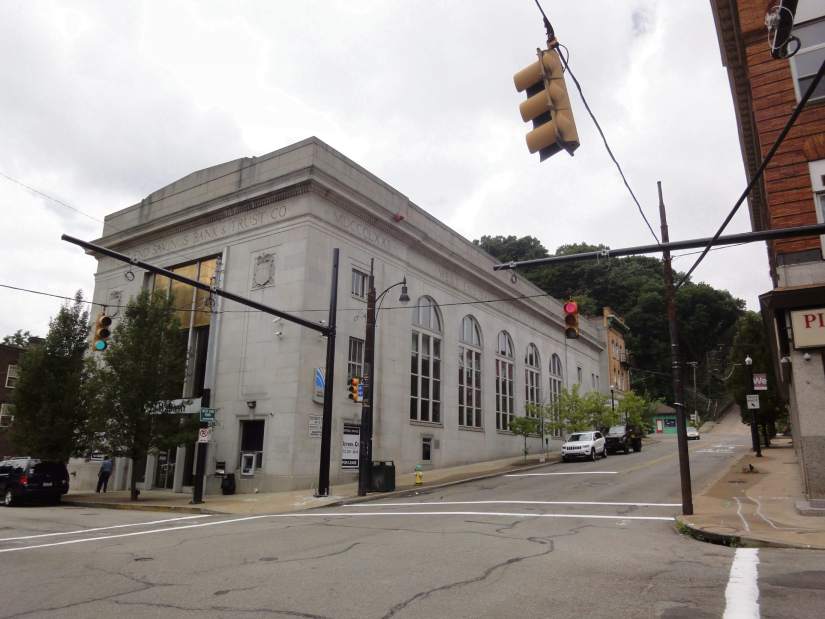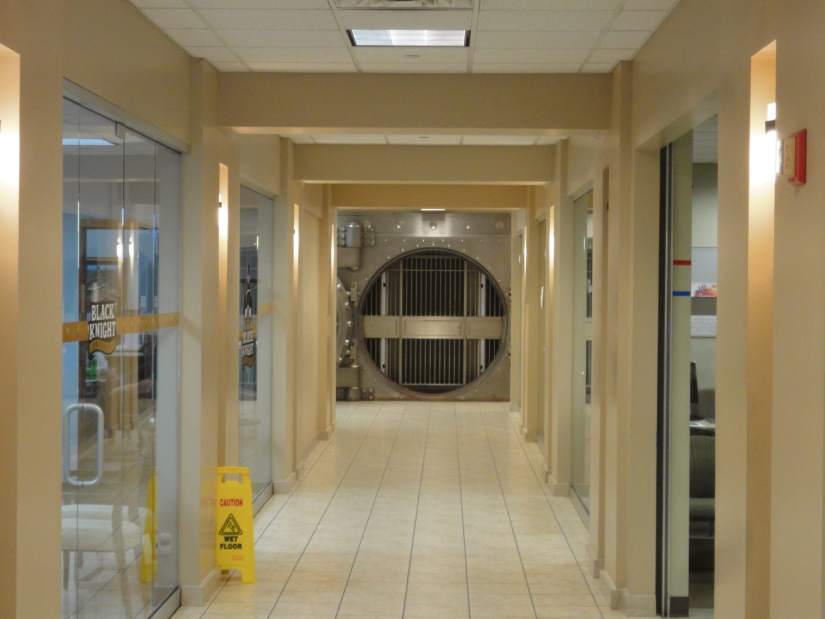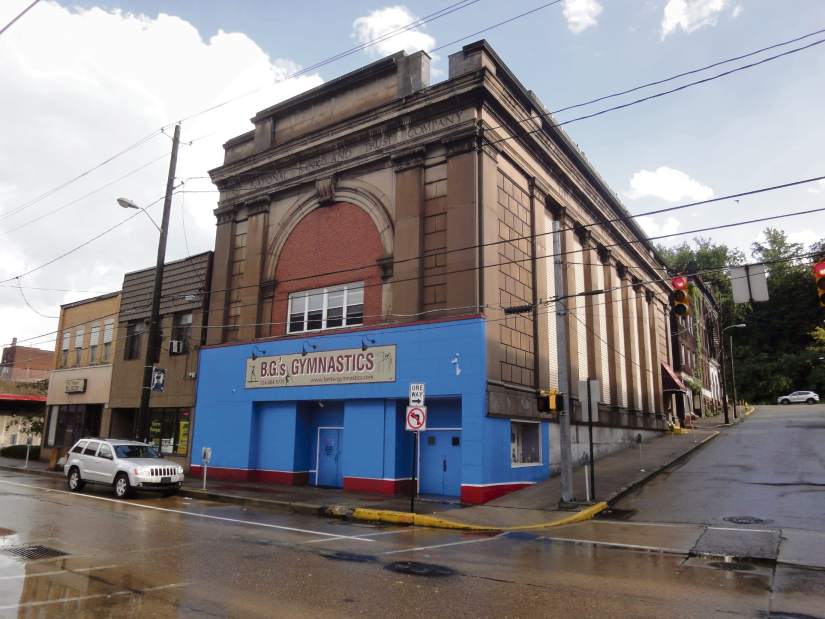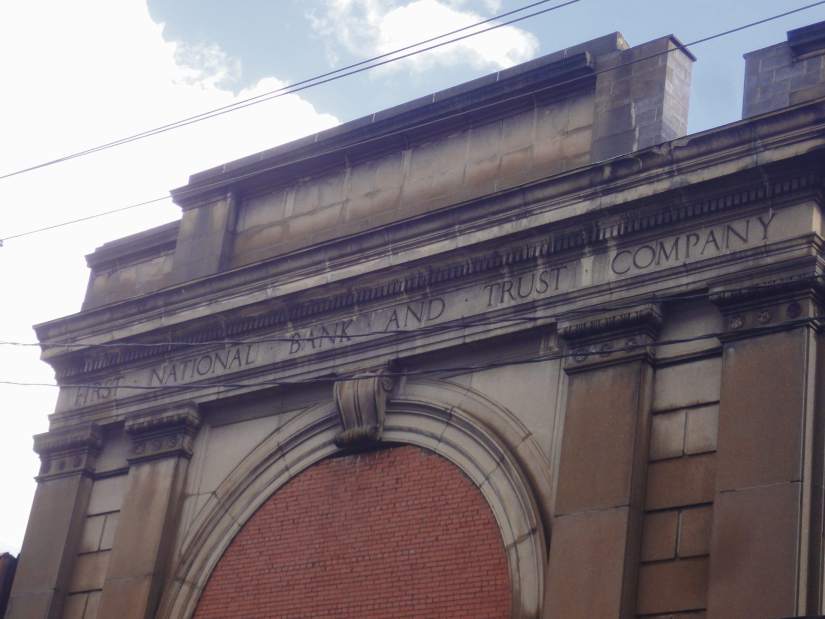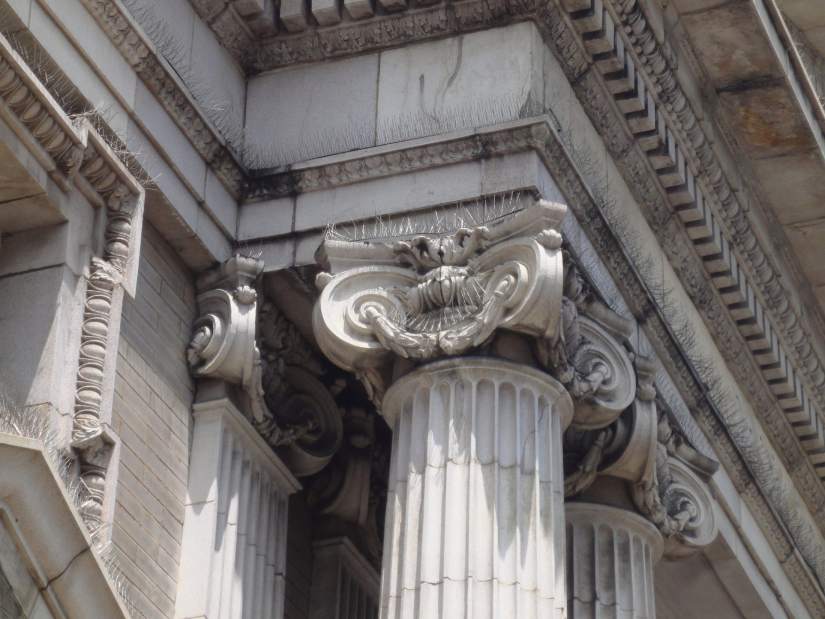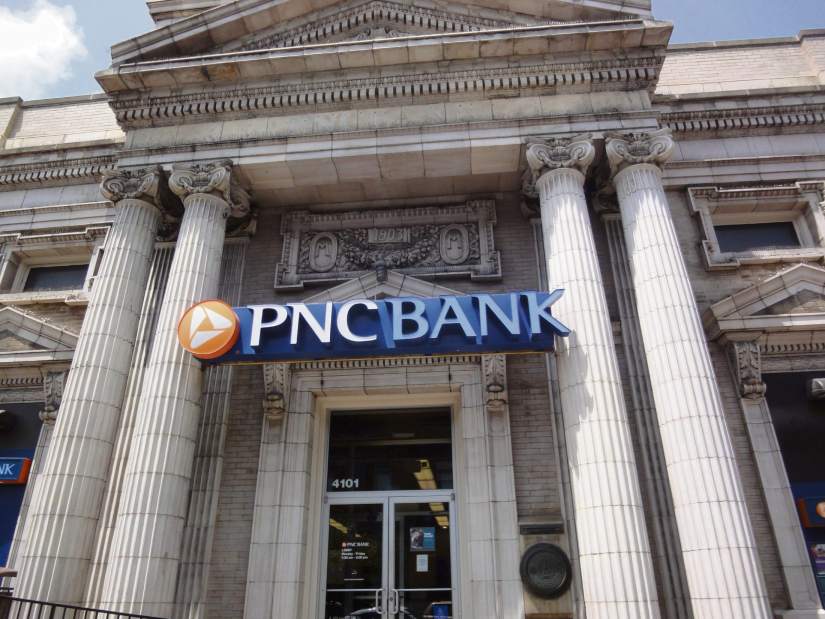Main Street banks: With classical form, institutions once inspired awe
They were the mainstays of Main Street. Big, white limestone banks, often marked by pairs of flanking Greek or Roman columns and carved flourishes around their main doors.
With massive symmetry, solid-looking proportions and this classical style, they evoked permanence and stability. They were usually situated prominently on the corners of main streets, with rows of identical tall windows lined up like sentinels on the side streets.
Architecturally, these Main Street banks rank right after churches as the most significant pieces of good architecture in our small towns, as well as in many city neighborhoods. These cool, quiet, two- and three-story banking halls, opening up in front of you as you stepped inside, could, like a church, leave you somewhat awed. You would see elaborate light fixtures hanging from coffered ceilings above and lots of marble and well-polished bronze and brass appointments around you.
Most of these banks were built from about 1910 up to about 1930, and they were so common and so similar in their basic form, they constituted a style of their own. Yet, as you drive around Western Pennsylvania, you will be dismayed at how little is left intact of this once grand and distinctive architectural style.
Most of those that remain on Main Street have been modernized over the years with mediocre results. Dropped ceilings of acoustical tile and fluorescent lighting abound on the interiors. On the exteriors, some are totally disfigured with filled-in windows, as well as with new ATMs and the big glaring signs that banks now use in pursuit of a marketing advantage.
But the saddest examples are what you will find in some of our most distressed mill towns, where the main streets can seem almost deserted. These are places such as Monessen, Aliquippa or Braddock, where the banking “palaces” have been abandoned to other uses that sometimes mock that original idea of permanence and stability.
In Monessen, the building that began life early in the last century as the imposing First National Bank and Trust Co. is now a gym, with its formerly huge windows filled-in and a big, blue-painted new front covering the old entrance.
In Aliquippa, the stately former Mellon Bank branch was built in 1920 on Franklin Avenue just a few hundred yards from the main gate of the old Jones & Laughlin mill. The mill, which once employed more than 10,000 steelworkers, no longer exists, and banking is long gone, too. The big bank building, like a number of other commercial buildings nearby, is now occupied by a nonprofit social-service agency.
Monessen, on the Monongahela, and Aliquippa, 60 miles away on the Ohio, were more or less at the geographic poles of steelmaking in the Pittsburgh area, and the condition of their main streets is not the whole story. Like most of the mill towns in between, much of the economic activity that once centered on their main streets has moved to malls up on the hills beyond the towns, and new banks have come in to replace the old ones — almost always with drive-in convenience.
But the loss of fine architecture along our main streets is still apparent and abhorrent. Only in America, it seems, do we so casually throw away such handsome old buildings.
Even when these old bank buildings have been kept mostly intact on the exterior, the interiors don't inspire. In the West End of Pittsburgh, the West End Savings & Trust Co. once flourished. On opening day in 1927, the three-story-high banking hall was decked with flowers and the room was flooded with light from two-story-high windows on three sides. Today there are three stories of offices built into that once-magnificent space. The renovations are tasteful enough, and some remnants of the past are still there — an ornate stand-up bank desk and some photos are displayed in the lobby, and you can walk right up to the old vault with its huge round door opened for your inspection. It's intriguing in its detail. But all of that only contributes, in the end, to your sense of loss.
And then there are the signs! PNC is possibly the worst in this category, as its glaringly blue-and-orange logo inevitably clashes with anything classical. Its finely detailed bank in Lawrenceville — still largely intact on the interior — has two ATMs and four large signs at its front, all making sure that you don't miss out on knowing whose bank this is. PNC is actually one of the most architecturally astute business organizations around here, but in this case, it falls down badly.
Banking, of course, has changed dramatically since the 1920s. The Depression didn't exactly reinforce the idea of banking's stability, and by the time new banks were being built again after World War II, the preferred styles had shifted to more modern, less formal and more personal-feeling banks.
By the 1960s, drive-ins were beginning to be a feature of most banks, and they are virtually a requirement now. A totally new look prevails today. Moreover, the functions and locations of branches are changing. Big supermarkets often offer a bank branch inside. ATMs have reduced traffic at the tellers' positions. And branch banking itself is becoming less important everyday as more customers now do their banking online.
John Conti is the Tribune-Review architecture critic. Reach him at tribliving@tribweb.com.

